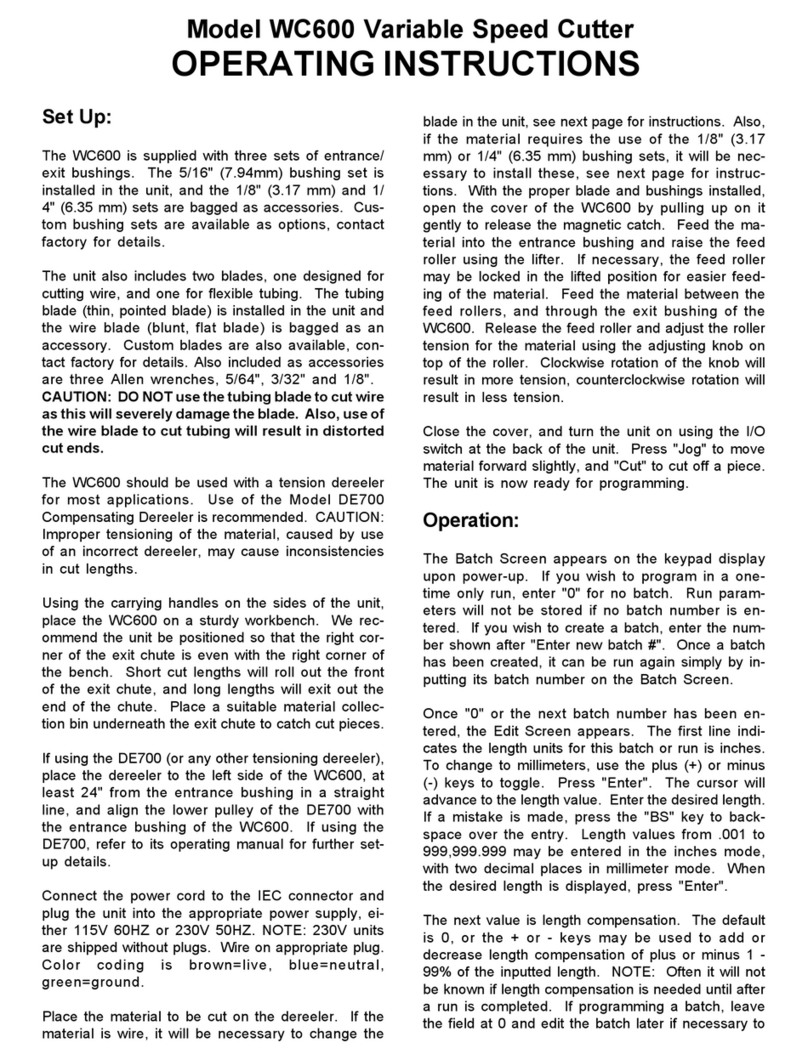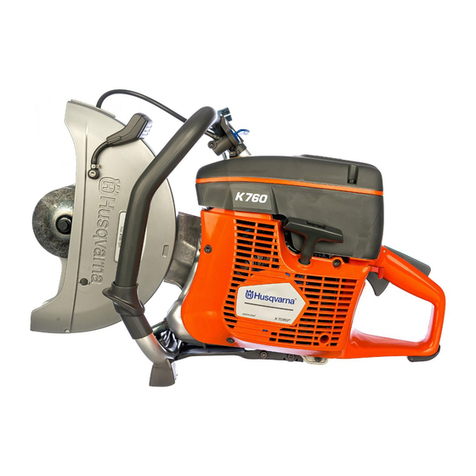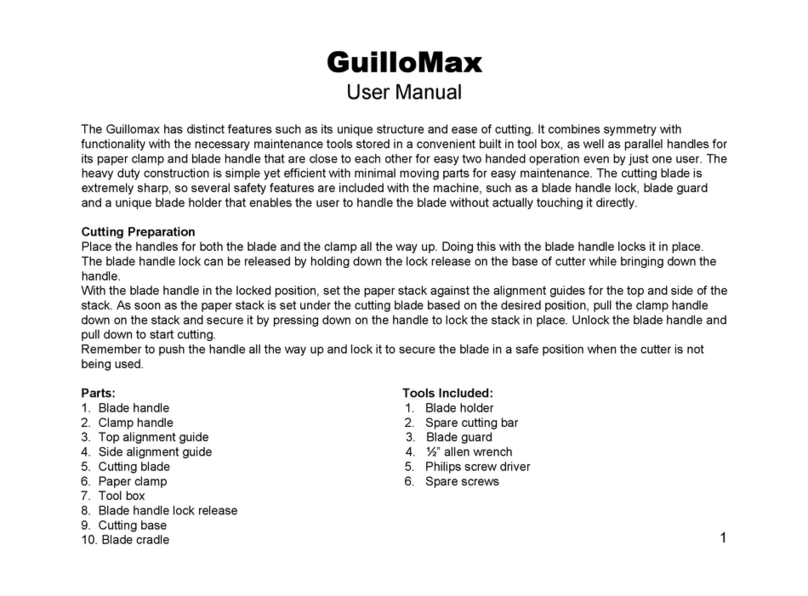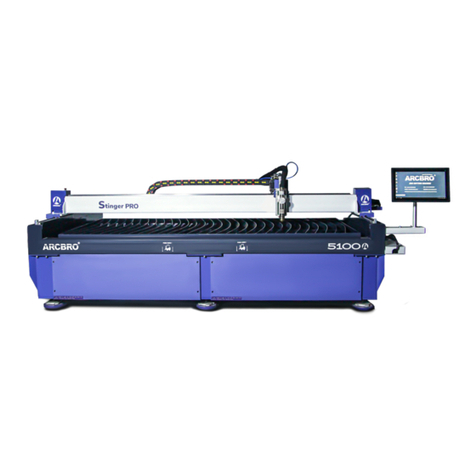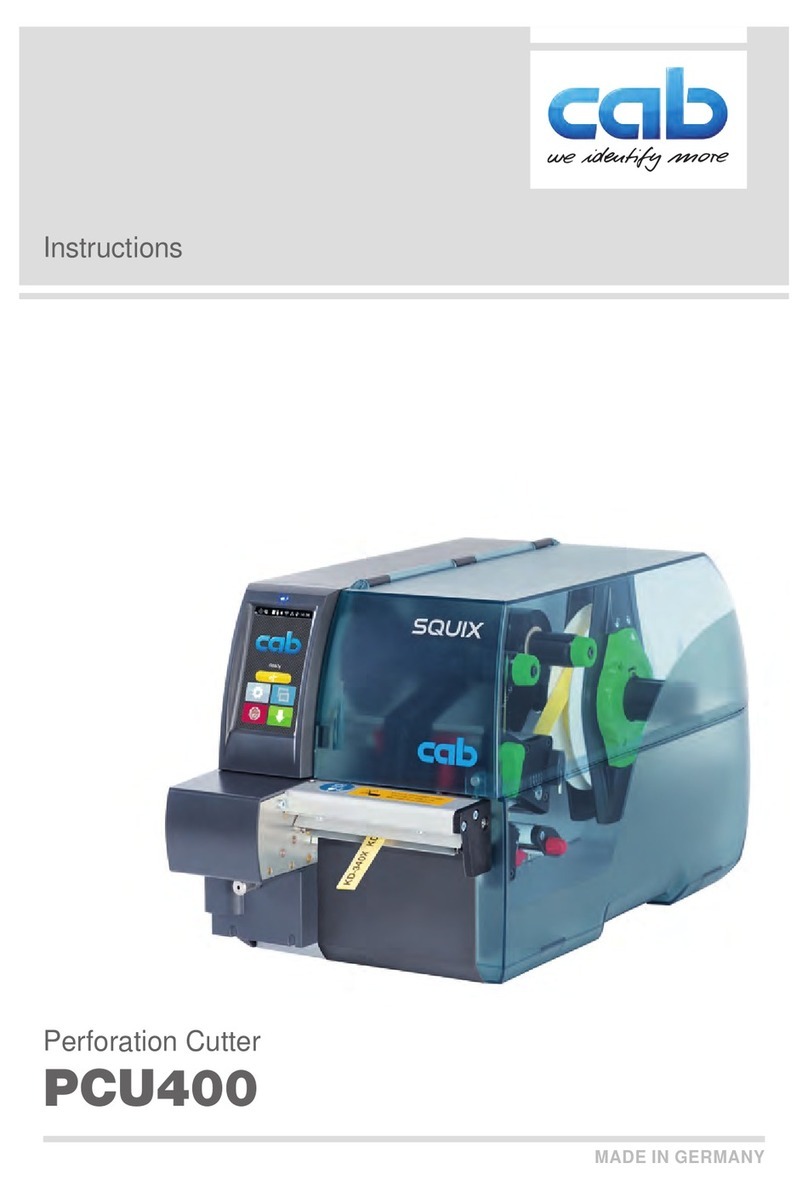
Safety advice relating specifically to router tables
a)Read and understand table and router manual and
accessory warnings. Failure to follow all instructions and
warnings may result in serious personal injury.
b) Fully assemble and tighten all fasteners required for
this table and for mounting the router to the plate. Do
not use the router table until all assembly and
installation steps have been completed. Check the table
and the router to make sure fasteners are still tight
before each use. A loose table is unstable andmay shift
in use.
c) Make certain the router is not plugged into a power
outlet when installing into the table, removing from
table, making adjustments or changing accessories.
Router could accidentally start.
d)Do not plug router motor power cord into standard
wall outlet. It must be plugged into the router table
switch. Power tool switches and controls need to be
within your reach in emergency situations.
e) Before operating, make sure the entire unit (table with
router installed) is placed on and secured to a solid, flat,
level surface and will not tip. Use of auxiliary in-feed and
out-feed supports is necessary for long or wide work
pieces. Long work pieces without adequate support can
flip off the table or cause the table to tip over.
f) Be certain router motor is fully and securely clamped
in the router base. Periodically check the base fastener
clamping tightness. Router motor can vibrate loose from
the base during use and fall from table.
g) Do not use the router table without the overhead
guard or auxiliary bit guard. Remove all dust, chips, and
any other foreign particles that can affect its function.
Adjust the guard height so that it clears the router bit
and the work piece. The guard will aid in keeping hands
from unintended contact with rotating bit.
h) Never place your fingers near a spinning bit or under
the guard when router is plugged in. Never hold the
work piece on the out-feed side of bit. Pressing the work
piece against the out-feed side of the fence may cause
material binding and possible kickback pulling hand
back into bit.
i)Guide work piece by the fence to maintain control of
work piece. Do not place material between router bit
and fence while routing the edge. This placement will
cause the material to become wedged, making
kickback possible.
j) Routers are i
ntended for working with wood,
wood-like products and plastic or laminates, not for
cutting or shaping metals. Be sure work piece does not
contain nails, etc. Cutting nails may cause loss of
control.
k) Do not use bits that have a cutting diameter that
exceeds the clearance hole in the table top insert. Bit
could contact insert ring, throwing fragments.
l) Install bit in accordance with instructions in router
manual and securely clamp the router bit in the collet
chuck before making any cuts to avoid bit becoming
loose during operation.
m) Never use dull or damaged bits. Sharp bits must be
handled with care. Damaged bits can snap during use.
Dull bits require more force to push the work piece,
possibly causing the bit to break or the material to kick
back.
n) The router table is designed to cut flat, straight and
squared materials. Do not cut material that is warped,
wobbly, or otherwise unstable. If the material is slightly
curved but otherwise stable, cut the material with the
concave side against the table or fence. Cutting the
material with the concave side up or away from table
may cause the warped or wobbly material to roll and
kick back causing user to lose control.
o) Never start the tool when the bit is engaged in the
material. The bit cutting edge may grab the material,
causing loss of control of the work piece.
p) Feed the work piece against the rotation of the bit.
The bit rotates anticlockwise as viewed from the top of
table. Feeding the work in the wrong direction will
cause the work piece to “climb” up on the bit, pulling
the work piece and possibly your hands into the
rotating bit.






